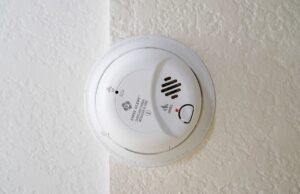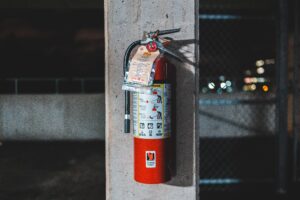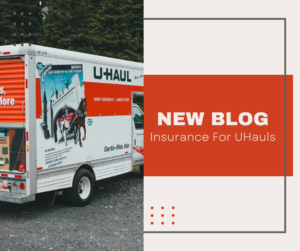How to lower your risk for a dog bite claim
 Dog bites can result in significant financial costs, with insurance companies paying out over $400 million annually for dog bite claims, according to the Insurance Information Institute. However, what’s even more alarming is that approximately $600 million exceeds the limits of home insurance policies. To safeguard yourself from potential out-of-pocket expenses stemming from a dog bite incident, it is crucial to ensure adequate coverage limits and consider obtaining an umbrella insurance policy.
Dog bites can result in significant financial costs, with insurance companies paying out over $400 million annually for dog bite claims, according to the Insurance Information Institute. However, what’s even more alarming is that approximately $600 million exceeds the limits of home insurance policies. To safeguard yourself from potential out-of-pocket expenses stemming from a dog bite incident, it is crucial to ensure adequate coverage limits and consider obtaining an umbrella insurance policy.
While owning a dog can bring immense joy, it is essential to be aware of potential risks and take precautions to prevent dog bites. Dogs can become agitated or aggravated by small children pulling their hair, or tail, or accidentally stepping on them. As responsible pet owners, it is our duty to closely monitor our pets and never leave a dog alone with small children. Even if a dog is provoked, it remains the owner’s responsibility to prevent the pet from biting someone. While many claims involve minor bites that only require first aid, the resulting damage can still be severe, such as nerve damage in the hands or feet.
The Insurance Information Institute outlines three types of laws concerning pet liability:
Dog-bite statute: Under this statute, dog owners are automatically held liable for any injuries or property damage caused by their dogs, even without provocation.
“One-bite” rule: In certain states, owners are not initially held liable for the first bite their dogs inflict. However, once an animal demonstrates vicious behavior, such as biting or displaying a “vicious propensity,” the owner can be held liable. Some states have moved away from the one-bite rule and impose liability on owners for any injury, regardless of whether the dog has previously bitten someone.
Negligence laws: According to negligence laws, dog owners are held liable if an injury occurs due to their unreasonable carelessness in controlling the dog.
While it is essential to understand the specific dog bite liability laws in your state, prevention is always the best approach. The Humane Society provides several guidelines to avoid dog bites. Since dogs cannot communicate verbally, it is crucial to pay attention to their body language. Warning signs that a dog may be uncomfortable include
- a stiff tail,
- pulled-back ears,
- intense stare,
- backing away
- visible signs of injury.
It is important not to take toys away from a dog abruptly, as this can provoke aggression. When someone asks to pet your dog, politely ask them to allow the dog to smell them first to ensure the dog is comfortable with the interaction. If your dog reacts negatively to someone, it is perfectly acceptable to inform that person that it is not a good idea to approach the dog.
While we hope that your beloved pup never bites anyone, unfortunate incidents can occur. Ensuring that your home insurance limits are adequate and considering the purchase of an umbrella insurance policy can provide additional protection for your finances in the event of such an incident.



 Our homes serve as sanctuaries, providing us with comfort, relaxation, and a treasure trove of cherished memories. Given the significance of our homes, it becomes imperative to protect them from a range of potential dangers, including fires, theft, and an often underestimated threat: carbon monoxide (CO).
Our homes serve as sanctuaries, providing us with comfort, relaxation, and a treasure trove of cherished memories. Given the significance of our homes, it becomes imperative to protect them from a range of potential dangers, including fires, theft, and an often underestimated threat: carbon monoxide (CO).
 Your home is not just a structure; it is a sanctuary where memories are made, families are raised, and friends are welcomed. Ensuring the safety of everyone who enters your home should always be a top priority. One crucial element of home safety is having a fire extinguisher readily available in case of emergencies. However, simply owning a fire extinguisher is not enough. It is vital to regularly inspect and maintain it to ensure its effectiveness during a fire. By following these tips, you will be well-prepared and equipped to handle a fire emergency.
Your home is not just a structure; it is a sanctuary where memories are made, families are raised, and friends are welcomed. Ensuring the safety of everyone who enters your home should always be a top priority. One crucial element of home safety is having a fire extinguisher readily available in case of emergencies. However, simply owning a fire extinguisher is not enough. It is vital to regularly inspect and maintain it to ensure its effectiveness during a fire. By following these tips, you will be well-prepared and equipped to handle a fire emergency.
 As the summer season comes to a close, you may be tempted to cancel your insurance policies on your summer toys like motorcycles, RVs, boats, and ATVs. However, it’s important to consider the potential risks and expenses that could arise during the off-season.
As the summer season comes to a close, you may be tempted to cancel your insurance policies on your summer toys like motorcycles, RVs, boats, and ATVs. However, it’s important to consider the potential risks and expenses that could arise during the off-season.
 When you rent a moving truck, one of the common dilemmas is whether to purchase insurance from the rental company. However, the need for insurance depends on various factors, including the type of vehicle you rent and your existing insurance coverage. Let’s explore this topic further to help you make an informed decision.
When you rent a moving truck, one of the common dilemmas is whether to purchase insurance from the rental company. However, the need for insurance depends on various factors, including the type of vehicle you rent and your existing insurance coverage. Let’s explore this topic further to help you make an informed decision.